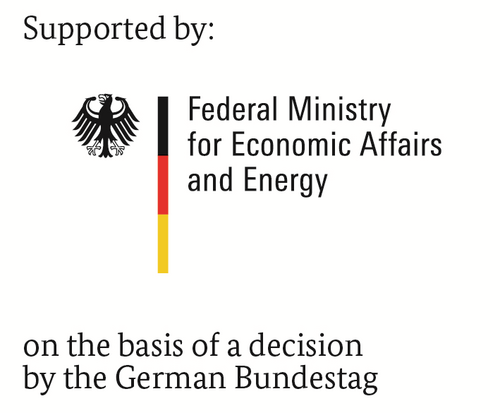Green Access Voltage levels crosscutting Smart Grid concept of an adaptive and automated distribution grid
Motivation
The construction of intelligent distribution grid causes different expectations. On the one hand, the grid should capture more fluctuating current from wind and solar plants. On the other hand, the overall costs for grid expansion and grid operation should be reduced. In this context the project Green Access is concerned with the following questions:
How smart has the grid to be? To which degree is grid automatization useful? How can the potential of grid feeders be optimally used?
Innovations will be achieved on following fields:
- Realization of an adaptive monitoring and control algorithm across voltage levels
- Exploration of a new concept for a Smart Grid guidance system with a focus on power management, voltage maintenance across voltage levels, and the exchange of topology data
- Development of an indicator system to evaluate the distribution grid applications (stability, business efficiency, and network capacity)
- Development of a maturity model to assess the relevant ICT and security requirements
- Analysis of the integration of grid-supportive PV systems
OFFIS contribution to the joint project
OFFIS leads the sub-project „grid-beneficial infrastructure and benchmarking“. The task of this sub-project is to analyze and define the preconditions for interoperability between the components, as well as to illustrate migration paths of existing infrastructure to the future Smart Grid. Based on these results, a maturity model with Smart Grid specific maturity levels will be developed. The maturity model shall have a holistic viewpoint i.e. different crosscutting issues will be considered like interoperability and security.
Goal
The aim of the project Green Access is to improve the automatization of the distribution grid in terms of a plug & automate principle to achieve an optimized operation regarding cost and capacity utilization. Therefore components and control concepts will be further developed in order to exchange information with one another. A further central objective is, that the system will be adjusted as a self-learning system. The advancement of an adaptive and automated distribution grid contributes to a better load factor of resources and simultaneously assures the quality of supply.
Technologies
- Use Cases
- SGAM (Smart Grid Architecture Model)
- NISTIR 7628 (National Institute of Standards ans Technology Interagency Report) – Guidelines for Smart Grid Cyber Security
- SGMM (Smart Grid Maturity Model)
Julia Masurkewitz-MöllerDr. Mathias Uslar; EnviroInfo & ICT4S, Conference Proceedings (Part 1) ; 07 / 2015
Julia Masurkewitz-Möller; Michael Specht; Wolfgang Friedrich; Proceedings of the CIRED 2017; 005 / 2017
Julia Masurkewitz-Möller; Thomas Kumm; Mathias Uslar; Wolfgang Friedrich; Proceedings of the INDIN 2017; 008 / 2017
Agnetha Flore; Mathias Uslar; Postersession des 2. Statusseminar "Zukunftsfähige Stromnetze"; November / 2018
Agnetha Flore; Jorge Marx Gómez; enviroinfo; September / 2019
Agnetha Flore; Marie Clausen; Mathias Uslar; Enabling High-penetration Renewable Integration into a Smarter Grid; November / 2019
Agnetha Flore; Thomas Kumm; Zukünftige Stromnetze 2020; Januar / 2020
Agnetha Flore; Jorge Marx Gómez; ICEEE 2020 International Conference on Economics, Energy and Environment; June / 2020
Agnetha Flore; Jorge Marx Gómez; Heliyon; September / 2020
Agnetha Flore; Jorge Marx Gómez; Mathias Uslar; Heliyon; November / 2020
Agnetha Flore; Jorge Marx Gómez; Mathias Uslar; Heliyon; November / 2020
Agnetha Flore; Dezember / 2020
www.ewe.de
www.ewe-netz.de
www.next-energy.de
www.uni-wuppertal.de
www.btc-ag.com
www.ise.fraunhofer.de
www.sag.de
www.sma.de
www.mauell.de
Duration
End: 30.06.2019
Website of project
Source of funding

FKZ: 03ET7534H
